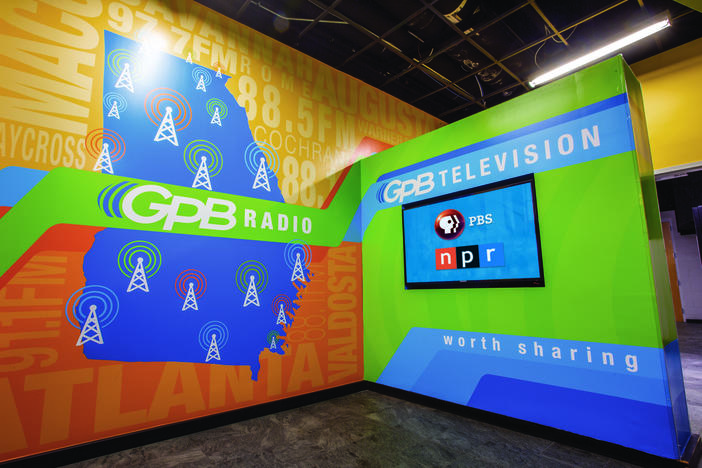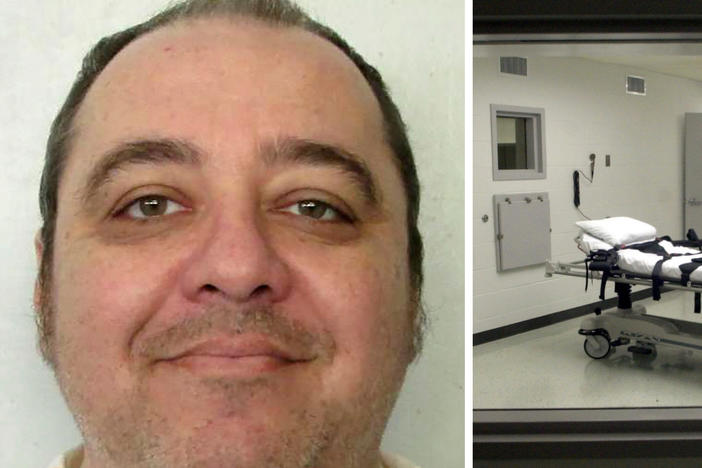Section Branding
Header Content
How do you address highways that have cut through communities?
Primary Content
There's a federal fund to address highways that cut through minority and low-income neighborhoods, like the Claiborne Expressway in New Orleans. But should the noisy highway be upgraded or moved away?
Transcript
JUANA SUMMERS, HOST:
Many U.S. highways have an unfortunate racist legacy. Federal planners often routed them directly through low-income, Black and brown neighborhoods, dividing communities and polluting the air. Now the Biden administration is trying to repair some of the harms. But as Drew Hawkins in New Orleans found, not everyone agrees on the best way to do that.
DREW HAWKINS, BYLINE: For more than a century, Claiborne Avenue was the economic and cultural heart of Black life in New Orleans. But then in the 1960s, Interstate 10 came along, and a section of it plowed right through Treme, one of the oldest Black neighborhoods in the country. Claiborne Avenue now lies in the shadow of the elevated highway called the Claiborne Expressway. Over the years, there have been some efforts to enliven the empty and unused spaces underneath the highway overhead. Nine years ago, they put a playground here, but no children play here. There's trash and needles scattered around, and it's so loud it's hard to hold a conversation.
AMY STELLY: How you doing?
HAWKINS: Good. How are you?
STELLY: I'm doing well.
HAWKINS: Amy?
STELLY: Yes.
HAWKINS: Amy Stelly suggested I meet her here. She lives just over a block away in her childhood home.
What about kids playing here?
STELLY: Kids never come here because kids are smart. It's the adults who aren't. It's the adults who built the playground under the interstate.
HAWKINS: Stelly is an artist and urban designer. She also started the Claiborne Avenue Alliance with other residents to try to do something about the noisy, polluting highway looming above. For her, there's only one way to fix it.
STELLY: Removal is the only cure.
HAWKINS: Stelly and her alliance submitted a proposal to President Biden's Reconnecting Communities program. They were looking for funding to figure out what it would take to move the highway out of the neighborhood.
STELLY: I'm insisting on it because I'm a resident of the neighborhood, and I live with this every day.
HAWKINS: In many ways, the project seemed like the perfect candidate for Reconnecting Communities. The Claiborne Expressway was even specifically referenced by the White House when it announced the kind of projects the money was for, but Stelly's proposal was denied. Instead, the feds gave $500,000 to a different proposal submitted by city and state officials. They say the highway is just too important to be moved, and they'll use the money for upgrades like lighting and drainage and ramps. Stelly says that's a waste of money.
STELLY: We shouldn't be using it in a way that is going to make living here more complicated or living here more dangerous.
HAWKINS: The winning proposal also suggested putting even more things underneath the interstate, like a public market complete with stages and performance spaces. Stelly says that makes about as much sense as the playground.
STELLY: Yes, it's a foolish idea because you're going to be exposed to the same thing.
HAWKINS: But Stelly hasn't given up. After her proposal was denied, she turned to the EPA and is now working to collect data on the health impacts.
STELLY: Oh, I forgot the sensor. I'm sorry.
HAWKINS: When we met at the playground, Stelly and two grad students were taking readings.
STELLY: So they're our scientists.
HAWKINS: The noise levels are as loud as a motorcycle engine and could cause permanent hearing damage, but it's not just the noise. Air pollution levels at the playground are far above the EPA's limits.
OK. We're over on noise and pollutants.
STELLY: We are way over.
UNIDENTIFIED PERSON: Yes.
HAWKINS: OK.
One of the main pollutants the study is looking at is particulate matter 2.5.
ADRIENNE KATNER: It's fine particulate matter. It's very small particles that come out of the tailpipe.
HAWKINS: Dr. Adrienne Katner is with the LSU School of Public Health. She says if you breathe in too much PM 2.5, it can damage every system in your body, causing a whole host of health problems. Katner is managing the EPA study. It could take up to three years to complete. There have been decades of research on highway pollution, but this is the first study focusing on the Claiborne Expressway.
KATNER: We're not inventing the science here. All I'm doing is I'm showing them kind of what we already know in science and then documenting it, giving them that data to then inform and influence policy. That's all I can do.
HAWKINS: Katner says their findings could help other communities fighting back against divisive infrastructure. For NPR News, I'm Drew Hawkins in New Orleans.
SUMMERS: The story comes from NPR's partnership with the Gulf States Newsroom and KFF Health News. Transcript provided by NPR, Copyright NPR.
Bottom Content



